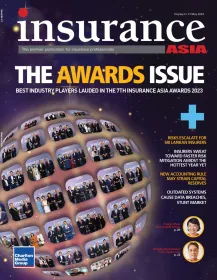
Consumers are cutting back on insurance spending and here’s why
With the cost of living on the upswing, will insurance be cut out of the household budget?
Consumers are now flinching from a higher cost of living as a result of inflation in Asia Pacific and many are cutting back on spending with one in six saying they would cut back on insurance premiums first, a report by YouGov revealed.

Breaking it down to several key markets in APAC, Australia has the highest number with one out of five consumers saying they would cut back on policies or premiums. 16% of Hong Kong consumers have said they would ease up on insurance spending, an almost similar figure to 15% in India.
Consumers in Singapore and Indonesia are slightly less resistant to the cost of living increases with just one in eight looking to cut back on insurance in the wake of higher costs (12%).
Commenting on Singapore’s numbers,, Ervin Ha, APAC head of commercial at YouGov told Insurance Asia that with inflation in Singapore reaching a 14-year high it is expected for consumers to feel the effects of rising costs and plan for cutbacks to mitigate its impact.

“While some do plan to cut back on insurance policies and premiums, it appears to still be more cost resistant than other consumer categories such as dining out, travel, and clothing, where greater cutbacks are anticipated,” Ha said.
ALSO READ: What an on-demand insurance product looks like
He also identified that in Singapore, those who will likely cut back on insurance are those ages 55 and above. This runs parallel with the numbers in APAC that shows older consumers will be most likely to ease up on insurance spending.

“This is consistent with earlier YouGov data which found that those above 55 are most likely to expect their financial situations to worsen over the next 12 months, which could be one explanation for why the group intend to cut back,” Ha explained.
A weight on insurers
However, despite only 14% of consumers planning to cut back on insurance first a report by Swiss Re said economic slowdown and the high-inflation environment will weigh on insurance markets as slowing growth typically leads to lower demand for insurance.
In a forecast, Swiss Re predicts a negative 0.2% growth in global insurance premiums, with a potential positive 1.9% growth in 2023. However, despite this development, this is still a below-trend performance.
Treading water
With the current economic conditions, insurers will continue to tread water as Swiss Re expects flat growth in total global premiums this year based on real inflation-adjusted terms
“Nevertheless, in nominal we expect total premiums volumes will exceed the USD 7 trillion mark for the first time ever by the end of this year. We base our estimation of a rise in total premiums to $7.3t from $6.9tat the end of 2021 on strong market recovery from pandemic-induced lows, continued rate hardening in non-life, and stronger premium growth in emerging markets in particular,” Swiss Re said.
Outlook
Swiss Re describes 2022 to 2023 as a transition year for the insurance industry as it navigates the economic realities of high inflation and low growth.
Swiss Re predicts the potential short-term and long-term headwinds in the industry would be the impact of the war in Ukraine, with the impact felt in consumer sentiment and curb demand for insurance. Price pressures would also be felt in property, casualty and health insurance. Additionally, weaker equity markets this year and widening credit spreads will likely lead to mark-to-market valuation losses on assets and capital.
For positive trends, rising interest rates will boost most insurers’ investment returns. Heightened awareness in a post-pandemic world will also continue to drive higher demand for life insurance. It is also expected that claims inflation will feed through into rate hardening in non-life commercial and personal lines this year and in 2023.











 Advertise
Advertise












